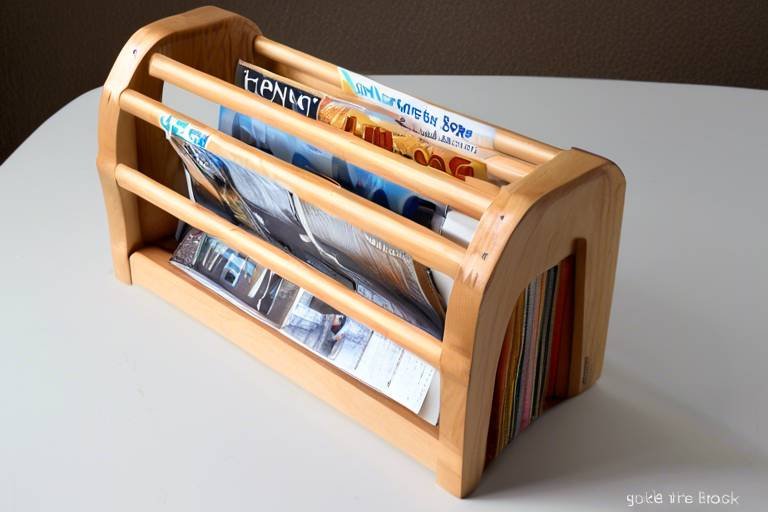Unleash Your Creativity with These Wooden Garden Art Ideas
Have you ever walked through a garden and felt a spark of inspiration? The kind that makes you want to create something beautiful with your own hands? Well, you’re in luck! Wooden garden art is not just a trend; it's a fantastic way to express your personality while enhancing the beauty of your outdoor space. Imagine walking into your garden and being greeted by stunning sculptures, whimsical figures, and vibrant planters, all crafted from wood. It's like stepping into an artist's gallery, but the best part is that you can be the artist!
Creating wooden garden art allows you to unleash your creativity and transform your garden into a unique sanctuary. Whether you're a novice or an experienced woodworker, there are projects that cater to all skill levels. The beauty of wooden art lies not only in its aesthetic appeal but also in its versatility. From rustic charm to modern elegance, wooden pieces can harmonize with any garden style. Plus, using wood as your medium is a sustainable choice that benefits the environment.
So, why should you consider diving into the world of wooden garden art? For starters, it offers an opportunity to personalize your outdoor space in ways that store-bought items simply can't match. You can choose designs and colors that resonate with you, making your garden a true reflection of your taste and style. Additionally, wooden art can serve practical purposes, such as providing homes for plants or creating functional garden features like benches or trellises.
To help you get started on this creative journey, we’ll explore various types of wooden garden art projects, from eye-catching sculptures to charming planters. Each project will not only enhance the visual appeal of your garden but also allow you to experiment with different techniques and materials. So grab your tools, let your imagination run wild, and prepare to create wooden masterpieces that will leave your visitors in awe!
Incorporating wooden art into your garden comes with a myriad of benefits. Firstly, wooden pieces add a touch of warmth and organic beauty to your outdoor space. Unlike plastic or metal, wood has a natural charm that blends seamlessly with plants and flowers. Furthermore, wooden art is incredibly durable when properly maintained, allowing your creations to withstand the elements and remain stunning for years to come.
Another significant advantage is the sustainability factor. By using reclaimed or sustainably sourced wood, you’re not only reducing waste but also contributing to a healthier planet. Plus, wooden art can be easily customized. Want a quirky garden gnome or a sophisticated abstract sculpture? The possibilities are endless, and you can make each piece uniquely yours.
Now that you’re excited about the benefits, let’s dive into the various types of wooden garden art you can create. Each type offers its own unique charm and opportunities for creativity:
Wooden sculptures can serve as stunning focal points in your garden. Imagine a beautifully carved owl perched on a tree stump or a flowing abstract piece that dances with the wind. These sculptures can be made from a variety of woods, each bringing its own texture and color to your garden.
Carved figures can bring a whimsical touch to your garden. Think of playful animals, fairy tale characters, or even personalized figures that represent your family. These creations can be painted in vibrant colors or left natural for a rustic look. The joy of carving is not just in the final product but in the process of bringing your imagination to life.
If you’re drawn to modern art, abstract wooden sculptures might be your calling. These pieces challenge conventional design and provoke thought, inviting viewers to interpret their meaning. You can experiment with different shapes and forms, allowing your creativity to flow freely.
Wooden planters are functional and stylish additions to any garden. They can be crafted in various sizes and shapes, accommodating everything from small herbs to large flowering plants. When constructing your own planters, consider the type of wood, drainage options, and how the design complements your garden's aesthetic.
Ready to roll up your sleeves? Let’s explore some DIY projects that will allow you to create your own wooden garden art. Whether you’re a beginner or an experienced crafter, there’s something for everyone.
If you’re new to woodworking, start with simple projects that require minimal tools and materials. These beginner-friendly ideas will help you build confidence and skills in creating garden art. For instance, you could start with a basic wooden birdhouse or a simple planter box. These projects are not only easy to make but also incredibly rewarding.
For those with more experience, explore advanced techniques that elevate your wooden garden art. Dive into intricate designs, advanced carving, and finishing methods to create stunning masterpieces. Consider incorporating mixed media, such as metal or stone, to add depth and dimension to your pieces.
Proper maintenance is crucial for preserving the beauty of your wooden garden art. To protect your creations from the elements, consider applying a weather-resistant finish or sealant. Regularly check for signs of wear or damage, and treat any issues promptly to ensure your art remains a cherished part of your garden for years to come.
- What type of wood is best for outdoor art? Cedar and redwood are excellent choices due to their natural resistance to rot and insects.
- How can I protect my wooden art from the weather? Applying a sealant or weather-resistant finish can help protect your pieces from moisture and UV damage.
- Can I paint my wooden garden art? Absolutely! Painting your wooden art can add a vibrant touch and allow for personalization.
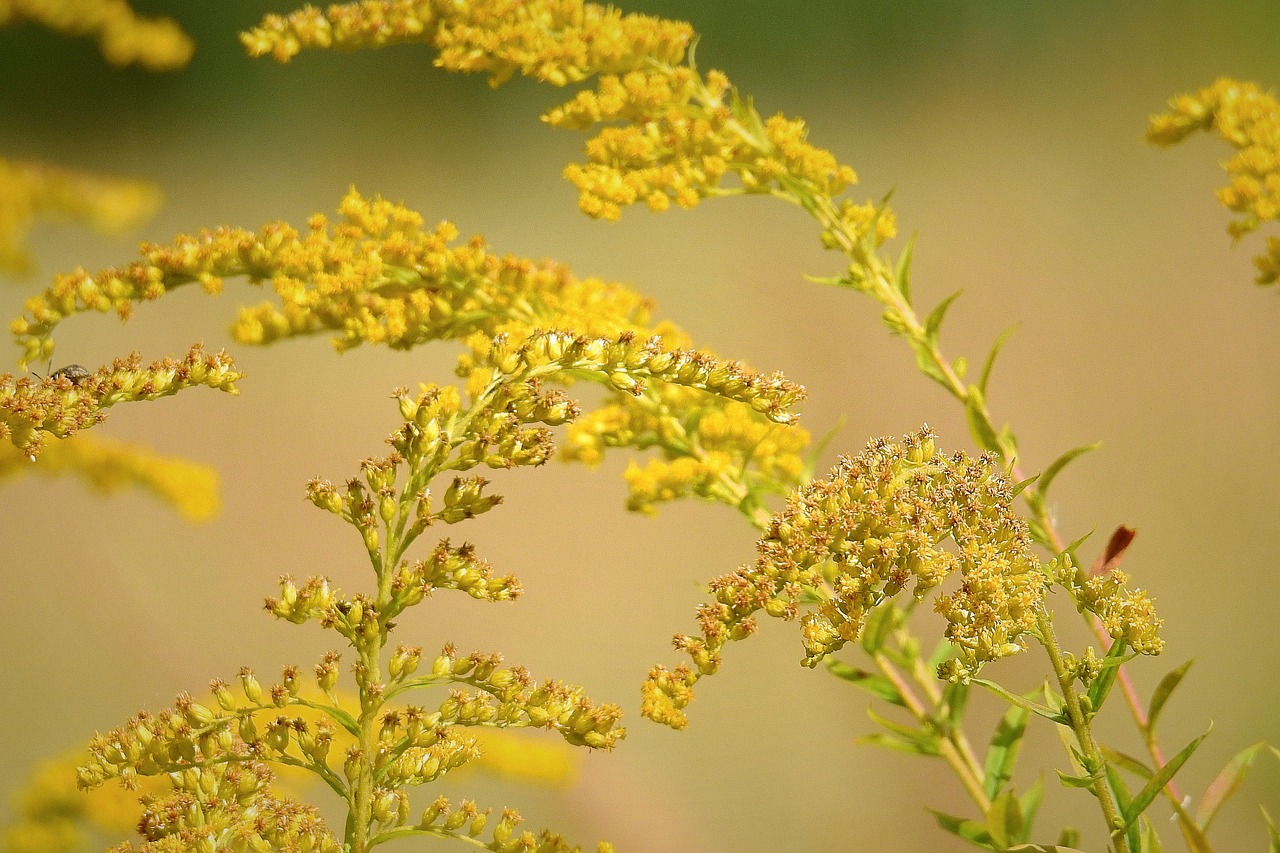
Benefits of Wooden Garden Art
When it comes to enhancing your outdoor space, wooden garden art offers a plethora of benefits that go beyond mere aesthetics. First and foremost, wooden art pieces add a touch of natural beauty to your garden, creating a harmonious blend with the surrounding flora. Imagine stepping into your garden and being greeted by a beautifully crafted wooden sculpture or a charming planter; it instantly elevates the atmosphere, making your outdoor area feel more inviting and personal.
Moreover, using wood in your garden art is a step towards sustainability. Wood is a renewable resource, and when sourced responsibly, it minimizes environmental impact. By choosing wooden art, you’re not just beautifying your space, but also making a conscious choice to support eco-friendly practices. This is particularly important in today's world where sustainability is at the forefront of many people's minds.
Another significant advantage of wooden garden art is its customizability. Unlike metal or stone, wood can be easily shaped, carved, and painted, allowing you to create pieces that truly reflect your personality and style. Whether you prefer rustic charm or modern elegance, wooden art can be tailored to fit your vision. You can mix and match different types of wood, finishes, and designs to create unique pieces that stand out in your garden. For instance, a combination of cedar and pine can provide a stunning contrast, while a splash of vibrant paint can bring a whimsical touch to your outdoor decor.
Additionally, wooden garden art is versatile. You can create a variety of items, from functional pieces like planters and benches to decorative elements such as sculptures and signs. This versatility means that you can continually evolve your garden's look without the need for constant investment. Plus, wooden art can serve as conversation starters, inviting guests to engage with your space and share in your creative journey.
Lastly, the tactile nature of wood adds a sensory experience to your garden. The warmth of the material, the grain patterns, and even the scent of freshly cut wood can evoke feelings of comfort and tranquility. When you incorporate wooden art into your garden, you’re not just adding decor; you’re creating an environment that nurtures the soul. So, whether you’re sipping coffee in the morning or hosting a gathering in the evening, your wooden garden art will serve as a beautiful backdrop, enhancing every moment spent outdoors.
In summary, the benefits of wooden garden art are manifold: it beautifies your space, supports sustainability, offers customization, provides versatility, and enriches your sensory experience. So why not dive into the world of wooden art and unleash your creativity? Your garden will thank you!
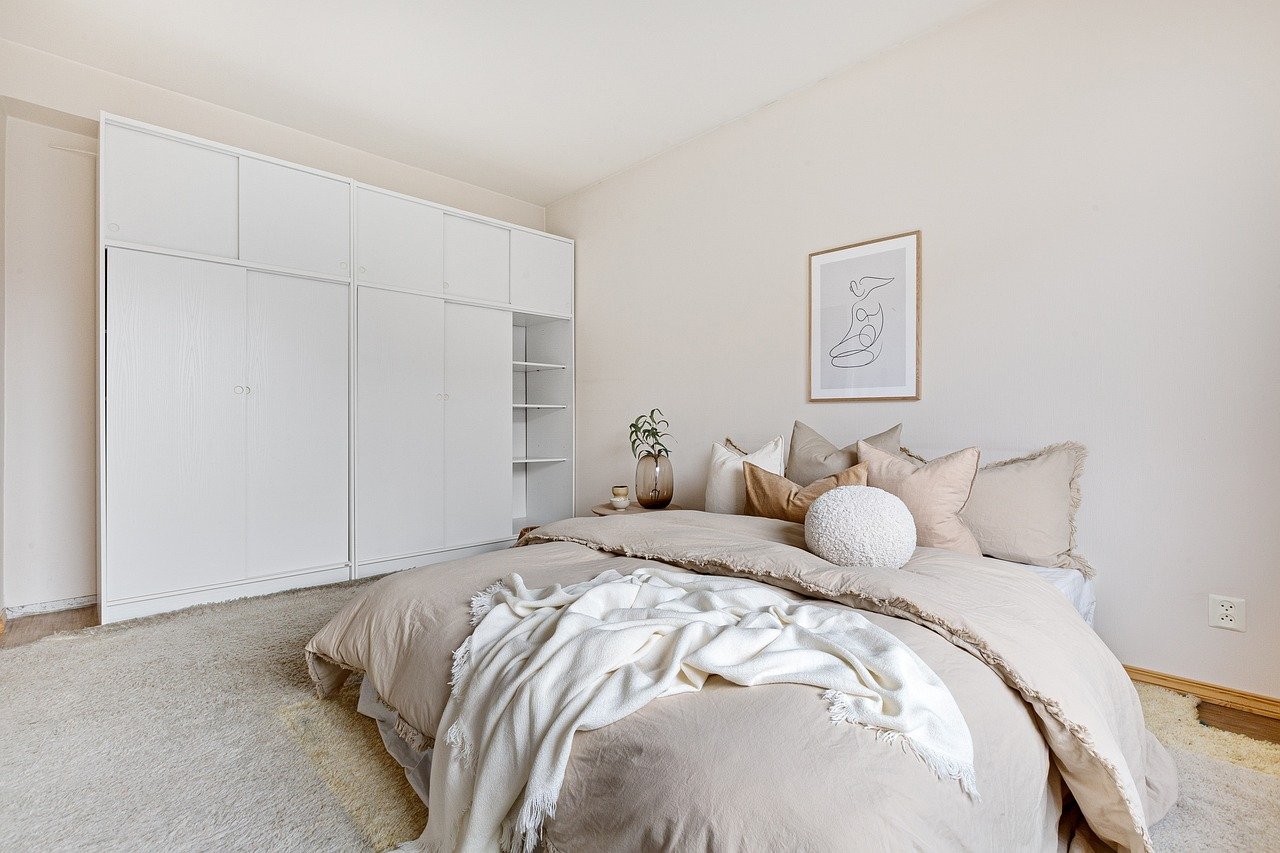
Types of Wooden Garden Art
When it comes to enhancing your garden's charm, wooden garden art offers a plethora of options that can transform your outdoor space into a personal oasis. From eye-catching sculptures to functional planters, the versatility of wood allows for endless creativity. Each type of wooden garden art not only serves a decorative purpose but also adds a unique touch that reflects your personal style. Let's dive into the different types of wooden garden art that you can incorporate into your garden design.
One of the most popular forms of wooden garden art is wooden sculptures. These artistic creations can serve as stunning focal points, drawing the eye and sparking conversations among visitors. Whether you prefer realistic figures or abstract shapes, wooden sculptures can be tailored to suit any theme or aesthetic. Imagine a beautifully carved owl perched on a stump, or an abstract piece that twists and turns, mimicking the natural flow of the garden around it. The beauty of these sculptures lies in their ability to evoke emotions and tell stories through their designs.
Another fantastic type of wooden garden art is wooden planters. These are not just functional; they can also be incredibly stylish. A well-crafted wooden planter can frame your flowers or vegetables beautifully, providing a rustic charm that complements the greenery. When constructing your own planters, consider the type of wood that will best suit your plants' needs, as well as the overall design that will enhance your garden's aesthetic. Whether you opt for a classic rectangular box or a more intricate tiered design, wooden planters can be a stunning addition to your garden.
You might also consider decorative signs as a form of wooden garden art. These signs can be personalized with your favorite quotes, garden names, or even whimsical directions to different areas of your garden. Not only do they serve a practical purpose, but they also add a touch of personality and warmth to your outdoor space. Imagine walking through your garden and being greeted by a hand-painted sign that says, "Welcome to My Garden Paradise!" It’s these little touches that make a big difference.
For those who want to explore more intricate designs, carved figures can bring a whimsical touch to your garden. These can range from animals to mythical creatures, and they often become conversation starters. Carving wood requires some skill, but with practice, you can create enchanting figures that reflect your personality and enhance the beauty of your outdoor environment. Pair these figures with a splash of color through painting or staining, and you have a unique piece that stands out.
Lastly, if you lean towards a more modern aesthetic, consider creating abstract designs. These pieces can challenge conventional forms and provoke thought, making them perfect for those who appreciate contemporary art. By experimenting with different shapes and forms, you can create wooden sculptures that not only enhance your garden but also serve as a form of artistic expression.
In summary, the world of wooden garden art is vast and varied, offering something for everyone. Whether you prefer the classic charm of sculptures, the practicality of planters, or the personal touch of decorative signs, incorporating these elements into your garden can truly elevate your outdoor experience. So, grab your tools, unleash your creativity, and start crafting your very own wooden masterpieces!
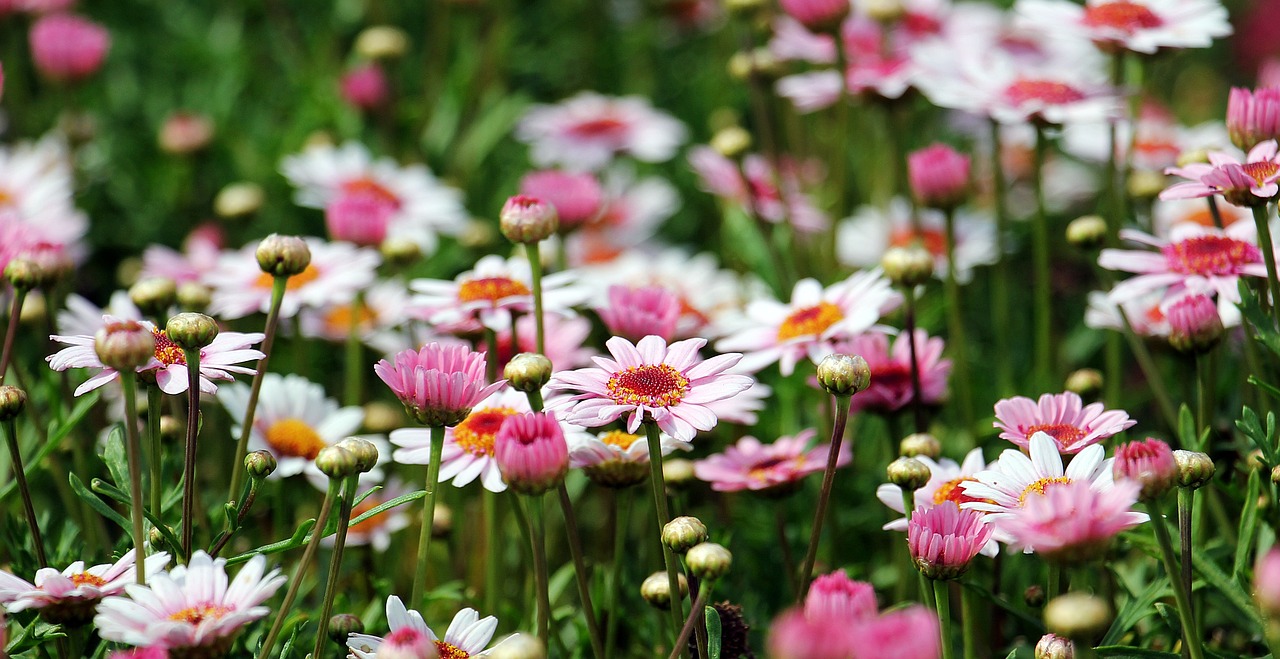
Wooden Sculptures
Wooden sculptures can serve as stunning focal points in your garden, transforming an ordinary outdoor space into a vibrant gallery of creativity. Imagine strolling through your garden and being greeted by a beautifully crafted wooden figure that not only captures the eye but also sparks conversation among your guests. These sculptures can range from simple, rustic designs to intricate, detailed masterpieces, each telling a unique story. The beauty of wooden sculptures lies in their versatility; they can represent anything from animals and people to abstract concepts, allowing you to express your personal style and creativity.
When it comes to creating wooden sculptures, the techniques are as diverse as the designs themselves. You might start with a block of wood and gradually carve it into a recognizable shape. Alternatively, you could use a series of wooden pieces to assemble a larger sculpture, combining various textures and finishes to create depth and interest. The choice of wood is also crucial; hardwoods like oak and walnut are not only durable but also have beautiful grain patterns that can enhance the overall aesthetic of your piece.
For those looking to dive deeper into the world of wooden sculptures, consider exploring various styles and techniques. Here are a few popular approaches:
- Realistic Figures: These sculptures mimic real-life subjects, capturing the essence and details of human or animal forms.
- Abstract Forms: Abstract sculptures focus on shape and form, often evoking emotions or ideas rather than representing specific objects.
- Functional Art: Some wooden sculptures can serve a dual purpose, such as garden benches or birdhouses that also act as art pieces.
Creating wooden sculptures can be a rewarding experience, allowing you to connect with nature and express your artistic vision. Whether you’re a seasoned crafter or a curious beginner, the process of sculpting can be both meditative and exhilarating. As you delve into this creative endeavor, remember that the most important aspect is to enjoy the journey of bringing your ideas to life. So why not grab your tools and start sculpting? Your garden is waiting for a touch of your creativity!
Q: What types of wood are best for outdoor sculptures?
A: Hardwoods like cedar, teak, and oak are excellent choices for outdoor sculptures due to their durability and resistance to weather conditions.
Q: How do I protect my wooden sculptures from the elements?
A: Applying a weather-resistant sealant or varnish can help protect your sculptures from moisture and UV rays, prolonging their life in your garden.
Q: Can I paint my wooden sculptures?
A: Absolutely! Painting can add color and personality to your sculptures. Just be sure to use outdoor-safe paint to ensure longevity.
Q: Are there any beginner-friendly projects for creating wooden sculptures?
A: Yes! Start with simple projects like small animal figures or abstract shapes that require minimal tools and techniques.
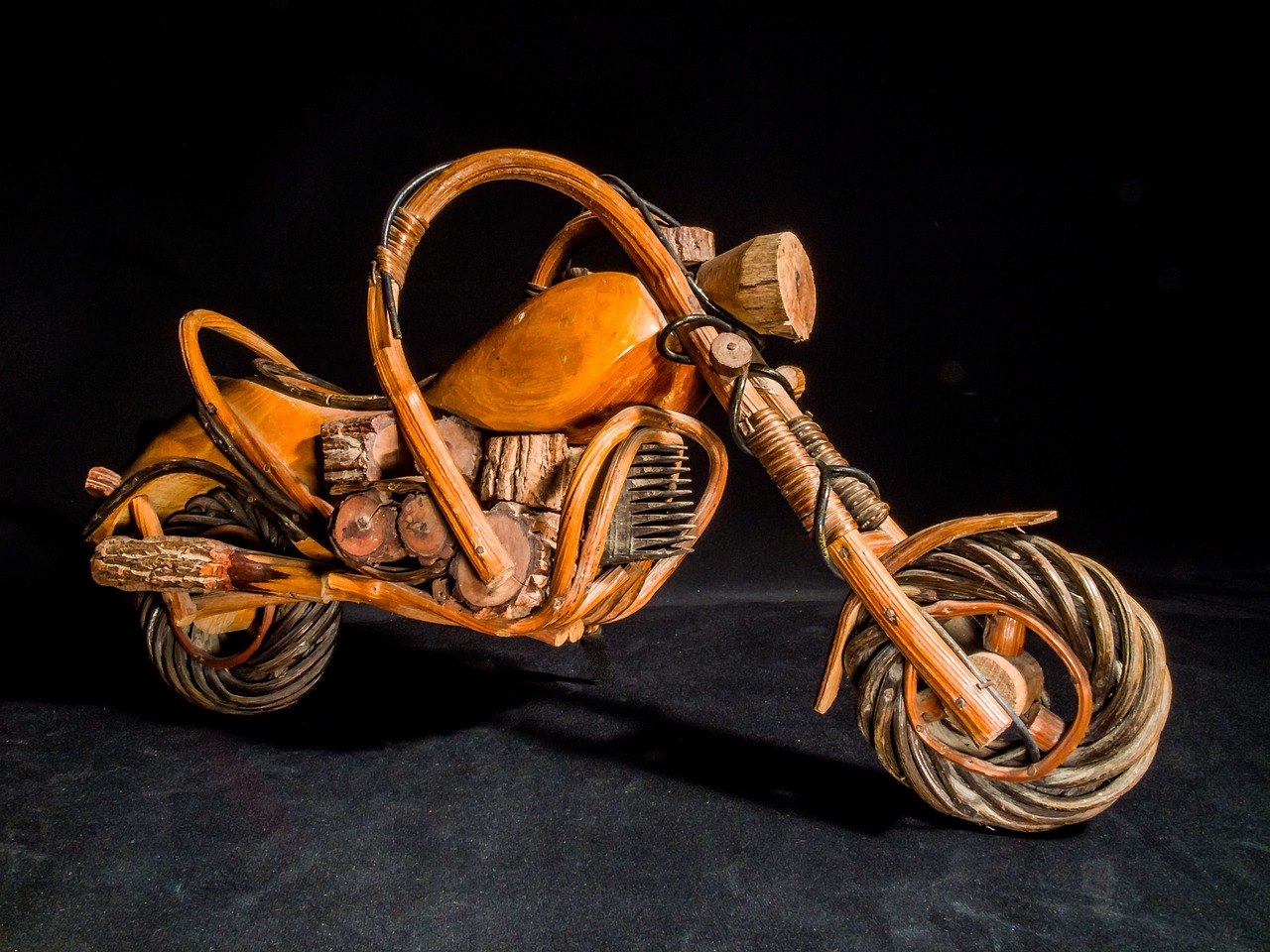
Carved Figures
Carved figures can truly bring a whimsical touch to your garden, transforming it into a lively and enchanting space. Imagine strolling through your outdoor sanctuary and being greeted by a delightful wooden owl perched on a branch or a playful fairy peeking from behind a flower. These charming pieces not only enhance the visual appeal of your garden but also serve as conversation starters for guests. The beauty of carved figures lies in their ability to reflect your personality and style, making them a unique addition to your garden.
Creating carved figures can be a fulfilling project, allowing you to express your creativity while honing your woodworking skills. Whether you're a novice or an experienced woodworker, the process can be both enjoyable and rewarding. To get started, you’ll need some basic tools like a carving knife, chisels, and sandpaper. Selecting the right type of wood is crucial; softwoods like pine or cedar are great for beginners due to their ease of carving, while hardwoods like oak or maple offer durability and a polished finish for more advanced projects.
When it comes to design, the possibilities are endless. You might want to carve a lifelike animal, a mythical creature, or even abstract shapes that evoke emotions. Here are a few ideas to spark your imagination:
- Animal Figures: Create your favorite woodland creatures, like rabbits, foxes, or birds.
- Mythical Beings: Bring to life fairies, gnomes, or dragons that add a touch of magic.
- Abstract Art: Experiment with shapes and forms that challenge traditional designs.
Once you’ve carved your figure, the finishing touches can make all the difference. Consider painting your creation with weather-resistant paints or applying a clear varnish to protect it from the elements. This not only enhances the visual appeal but also ensures that your carved figures withstand the test of time. Remember, the key to maintaining the beauty of your wooden art lies in regular upkeep. A quick wash with mild soap and water, followed by a fresh coat of varnish every few years, can keep your figures looking vibrant and new.
In conclusion, carved figures are more than just decorative items; they are expressions of creativity that can bring joy and personality to your garden. So grab your tools, let your imagination run wild, and start crafting your own enchanting wooden figures today!
Q: What type of wood is best for carving figures?
A: Softwoods like pine or cedar are recommended for beginners due to their ease of carving. For more intricate designs, hardwoods such as oak or maple are great choices.
Q: Do I need special tools for carving wooden figures?
A: Basic tools like carving knives, chisels, and sandpaper are sufficient to get started. As you gain experience, you may want to invest in more specialized tools.
Q: How can I protect my carved wooden figures from the weather?
A: Applying a clear varnish or weather-resistant paint can help protect your carvings from the elements, ensuring they last for years to come.
Q: Can I carve figures without prior woodworking experience?
A: Absolutely! Start with simple designs and gradually work your way up to more complex pieces. There are plenty of resources and tutorials available to help you learn.

Abstract Designs
When it comes to adding a touch of modernity to your garden, abstract wooden sculptures are a fantastic choice. These pieces break away from traditional forms, allowing you to unleash your creativity and express your unique style. Imagine walking through your garden and encountering shapes that twist and turn, inviting curiosity and sparking conversations among your guests. Abstract designs can transform your outdoor space into a gallery of artistic expression.
Creating abstract sculptures allows for a high degree of personal expression. You can experiment with various forms and materials, combining different types of wood to achieve a striking contrast. For instance, a smooth, polished piece of cedar can be juxtaposed with rugged, reclaimed oak, creating a visual dialogue that captivates the eye. The beauty of abstract art lies in its ability to evoke emotions and provoke thought—each viewer might interpret your creation in a different way, turning your garden into a canvas of imagination.
There are several techniques to consider when crafting your abstract designs:
- Layering: By stacking different pieces of wood, you can create depth and complexity in your sculpture.
- Curvature: Incorporating curves and bends can add a sense of movement, making your sculpture feel alive.
- Negative Space: Don't be afraid to leave gaps in your design; negative space can enhance the overall composition and draw attention to the surrounding environment.
When planning your abstract sculpture, consider the following tips:
- Choose a location that allows your sculpture to be viewed from multiple angles, enhancing its visual impact.
- Think about the scale of your piece; larger sculptures can serve as focal points, while smaller ones can be delightful surprises tucked among plants.
- Experiment with finishes; a natural wood stain can highlight the grain, while a bold paint color can make your sculpture pop.
Incorporating abstract designs into your garden not only enhances its aesthetic appeal but also invites a sense of wonder and exploration. As you create, remember that the process should be just as enjoyable as the final product. Embrace the unexpected, and let your imagination run wild. Who knows? Your garden could become a local landmark of artistic expression!
Q: What type of wood is best for abstract sculptures?
A: Hardwoods like oak, maple, and cherry are excellent choices due to their durability and ability to hold intricate details. However, softer woods can also be used for easier carving.
Q: How do I protect my wooden sculptures from the elements?
A: Applying a weather-resistant sealant can help protect your art from moisture and UV damage. Regular maintenance, such as cleaning and re-sealing, will ensure longevity.
Q: Can I paint my abstract designs?
A: Absolutely! Painting can add a vibrant splash of color and personality to your sculptures. Just make sure to use outdoor-rated paints for durability.

Wooden Planters
When it comes to enhancing your garden, are a fantastic way to combine functionality with style. Not only do they provide a beautiful home for your plants, but they also serve as an artistic element that can transform any outdoor space into a vibrant oasis. Imagine walking through your garden, where every corner reveals a unique wooden planter, each one telling its own story through its design and craftsmanship. The warmth of wood adds a natural touch that complements the greenery around it, making your garden feel cohesive and inviting.
Creating your own wooden planters can be a rewarding project, especially when you consider the numerous benefits they bring. For starters, wooden planters are not just aesthetically pleasing; they also offer excellent insulation for plant roots. This means your plants are less likely to suffer from temperature fluctuations, allowing them to thrive throughout the seasons. Additionally, wood is a sustainable material, especially if you choose to use reclaimed or locally sourced timber. This not only minimizes your carbon footprint but also adds character to your garden with its unique textures and colors.
Now, let’s talk about the types of wooden planters you can create. The options are virtually endless! You can opt for traditional rectangular boxes, which are perfect for growing herbs or flowers, or go for more creative shapes like tiered planters that add height and dimension to your garden. If you're feeling adventurous, consider crafting a wooden planter bench that doubles as seating, allowing you to enjoy your garden while surrounded by the beauty of your plants. Here are a few ideas:
- Rectangular Planters: Simple and effective for a variety of plants.
- Hanging Planters: Perfect for small spaces, adding vertical interest.
- Tiered Planters: Great for maximizing space and showcasing different plant heights.
- Planter Benches: Functional seating that incorporates greenery.
When constructing your wooden planters, it’s essential to choose the right type of wood. Cedar and redwood are popular choices due to their natural resistance to rot and insects. If you’re looking for something more budget-friendly, pressure-treated pine can also work, but it’s crucial to ensure that the chemicals used in the treatment are safe for your plants. To enhance the durability of your planters, consider sealing the wood with a non-toxic finish or liner. This will help protect the wood from moisture and prolong its lifespan.
As you embark on your wooden planter project, remember to incorporate drainage holes. This is vital for preventing water accumulation, which can lead to root rot. You can easily drill holes in the bottom of your planters, ensuring that excess water can escape freely. If you want to get even more creative, think about adding a decorative touch. You might paint your planters in vibrant colors, or you could use stencils to create beautiful patterns that reflect your personality. The sky's the limit!
In conclusion, wooden planters are not just a means to grow plants; they are a canvas for your creativity. By designing and building your own planters, you can express your style while contributing positively to the environment. So grab your tools, let your imagination run wild, and start crafting beautiful wooden planters that will bring your garden to life!
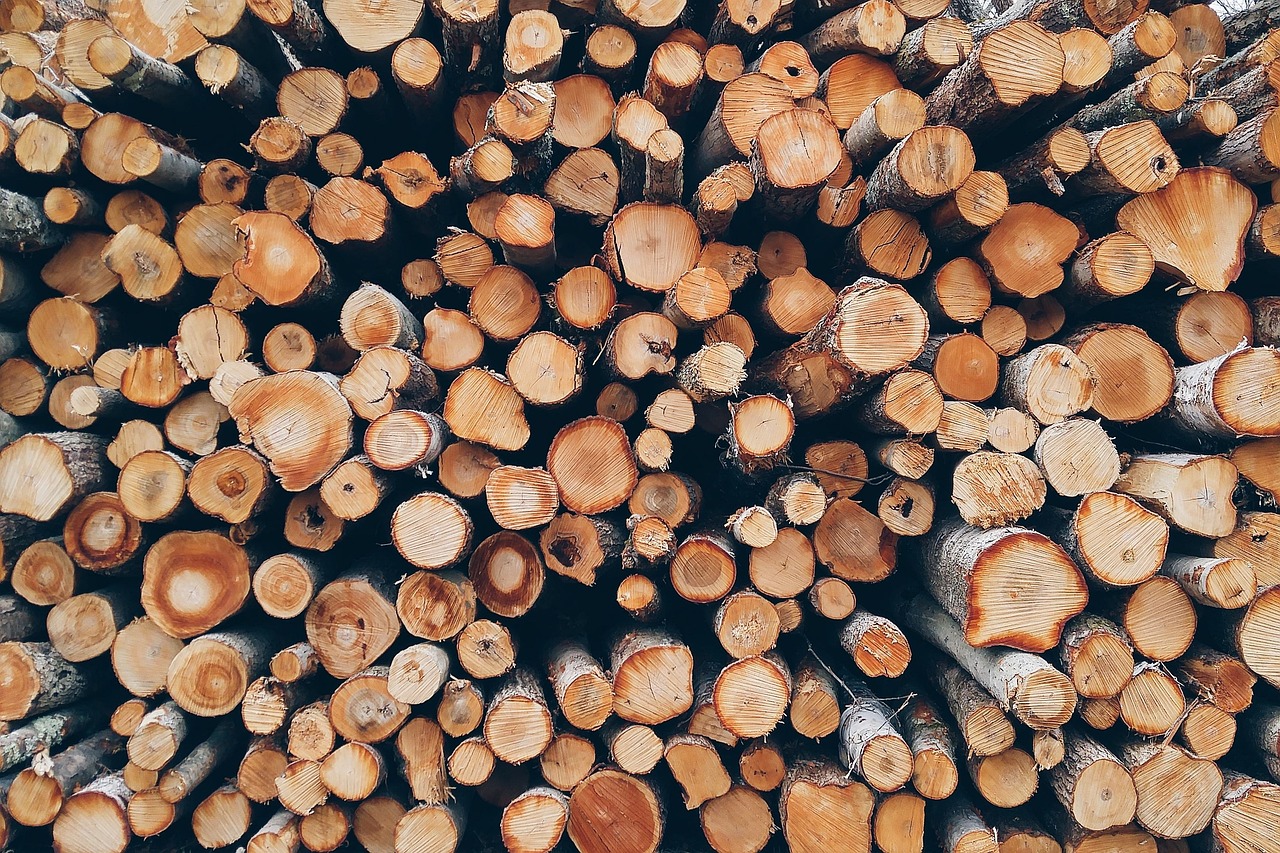
DIY Wooden Garden Art Projects
Are you ready to roll up your sleeves and dive into the world of DIY wooden garden art? Creating your own pieces can be incredibly rewarding, allowing you to express your personality while enhancing the beauty of your outdoor space. Whether you're a novice or a seasoned craftsman, there are countless projects you can undertake that range from simple to complex. The best part? You don’t need a workshop full of fancy tools to get started; just a few basic supplies and a little creativity can go a long way!
Let’s kick things off with some beginner-friendly projects that will help you ease into woodworking. One popular option is creating a decorative wooden sign. This project requires minimal materials—just some wood, paint, and a few tools like a saw and a drill. You can personalize your sign with your family name, a favorite quote, or even a fun garden-themed saying. Imagine how welcoming it will be for your guests when they see a beautiful sign welcoming them to your garden oasis!
If you're feeling a bit more adventurous, consider crafting a wooden birdhouse. Not only does this project provide a cozy home for local birds, but it also adds charm to your garden. You can find numerous plans online that cater to different skill levels. As you build, think about painting or decorating the birdhouse to match your garden’s aesthetic. Plus, watching the birds come and go will bring you joy and a sense of connection to nature.
For those who have some experience under their belt, advanced projects like creating wooden sculptures or intricate planters can be a fantastic way to challenge yourself. Sculptures can range from abstract forms to detailed figures, and the techniques involved can vary greatly. You might want to explore wood carving or even wood burning to add unique details to your creations. The satisfaction of seeing a piece evolve from a block of wood into a stunning focal point in your garden is simply unmatched!
To help you get started on your DIY journey, here’s a simple table outlining some project ideas, the materials you’ll need, and the skill level required:
| Project Idea | Materials Needed | Skill Level |
|---|---|---|
| Decorative Wooden Sign | Wood, Paint, Saw, Drill | Beginner |
| Wooden Birdhouse | Plywood, Nails, Paint, Drill | Beginner to Intermediate |
| Wooden Sculpture | Wood Blocks, Carving Tools, Paint | Intermediate to Advanced |
| Wooden Planters | Wood Planks, Screws, Drill | Intermediate |
As you embark on these projects, remember that the journey is just as important as the final product. Don't be afraid to make mistakes; every misstep is an opportunity to learn and improve your skills. Plus, the more you experiment, the more unique your garden art will become. Imagine how fulfilling it will be to sit in your garden surrounded by art pieces that you created with your own hands!
Finally, always consider the elements when planning your projects. Treatments like sealants or paints can help protect your wooden creations from weather damage, ensuring they remain beautiful for years to come. With a little care and maintenance, your DIY wooden garden art can become timeless treasures in your outdoor sanctuary.
Q: What type of wood is best for outdoor projects?
A: Cedar and redwood are excellent choices due to their natural resistance to decay and insects. Pressure-treated pine is also a popular option for budget-friendly projects.
Q: How do I protect my wooden garden art from the elements?
A: Use a high-quality outdoor sealant or paint to protect your wooden pieces from moisture and UV rays. Regular maintenance, such as reapplying sealant every few years, will help prolong their life.
Q: Can I use recycled wood for my projects?
A: Absolutely! Recycled wood can add character and charm to your garden art. Just ensure that the wood is safe to use and free from harmful chemicals.
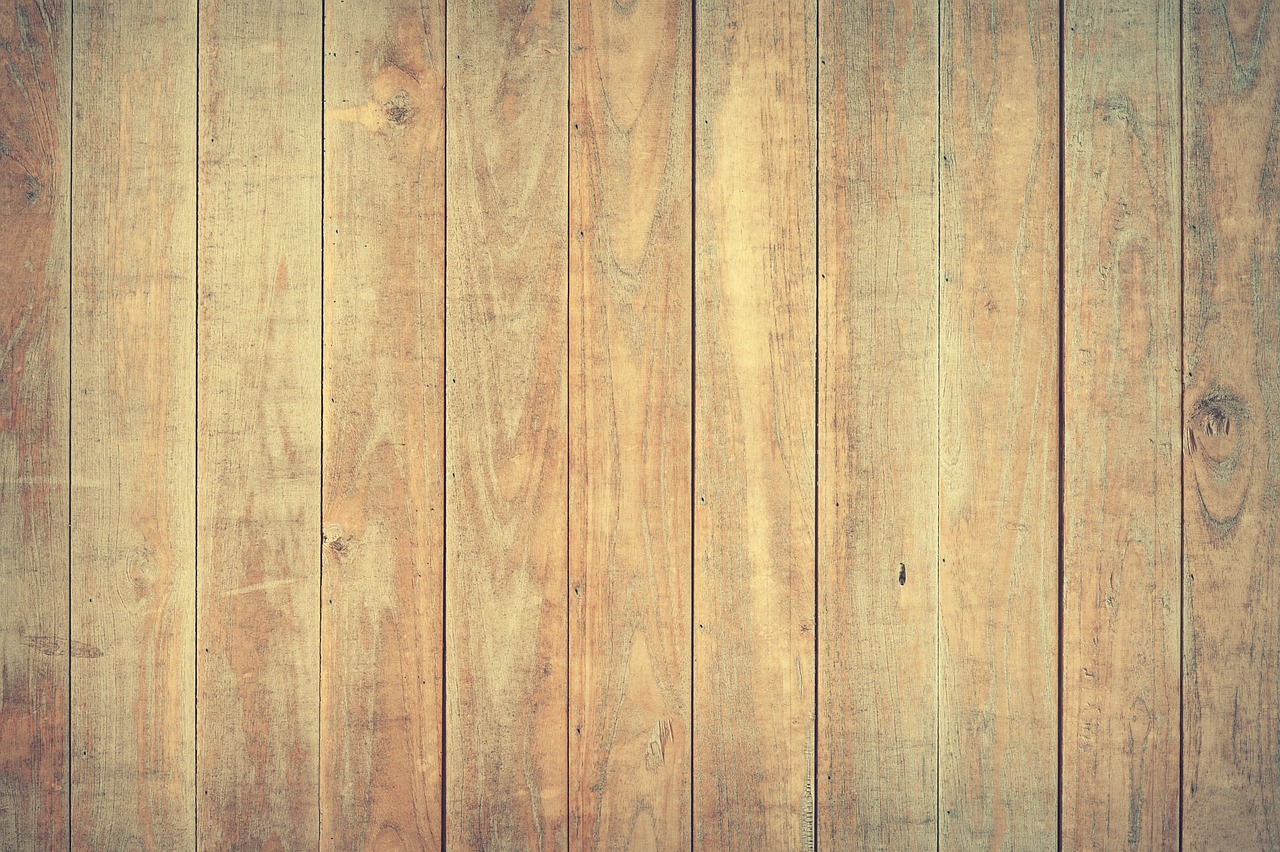
Simple Projects for Beginners
Are you ready to dive into the delightful world of woodworking? If you’re just starting out, there’s no need to feel overwhelmed! Simple projects are the perfect way to build your confidence and skills while creating stunning pieces for your garden. Imagine transforming your outdoor space with your very own wooden art—how exciting is that?
One of the best beginner-friendly projects is crafting a wooden birdhouse. Not only does it provide a cozy home for our feathered friends, but it also adds charm to your garden. You can find various plans online, but the basic structure usually involves just a few pieces of wood, some nails or screws, and a bit of paint to give it personality. If you’re feeling adventurous, why not add some decorative elements like carved flowers or painted patterns? It’s a fantastic way to express your creativity!
Another simple yet rewarding project is making a wooden planter box. This is not only functional, allowing you to grow your favorite flowers or herbs, but it also serves as a beautiful decorative piece. To create a basic planter box, you’ll need four wooden boards, some screws, and a waterproof liner to protect the wood from moisture. You can customize the size and shape to fit your space perfectly. Plus, painting or staining the wood can really make it pop!
For those who enjoy a bit of whimsy, consider creating a wooden garden sign. A personalized sign can add a touch of charm and character to your garden. You can use reclaimed wood for a rustic look or new wood for a more polished appearance. Simply cut the wood to your desired size, paint your message, and add some embellishments like stencils or carved designs. This project is not only simple but also a great way to welcome guests to your garden oasis.
Finally, if you're feeling particularly crafty, try your hand at making a wooden trellis. This structure not only supports climbing plants but also adds vertical interest to your garden. You can use simple lattice patterns or create more intricate designs. The best part? You can personalize it to match your garden's theme, whether it's rustic, modern, or whimsical.
Remember, the key to these projects is to keep it simple and have fun! Don’t worry about perfection; focus on the joy of creating something with your own hands. As you gain more experience, you can gradually take on more complex projects. So, grab your tools, and let your creativity flow!
Q: What tools do I need for these beginner projects?
A: For most simple projects, a basic toolkit will suffice. Essential tools include a saw, hammer, drill, measuring tape, and sandpaper. As you progress, you may want to invest in more specialized tools.
Q: What type of wood is best for beginners?
A: Softwoods like pine or cedar are excellent choices for beginners. They are easier to work with and typically more affordable. Plus, they take paint and stain well, allowing for customization!
Q: How do I protect my wooden art from the elements?
A: To ensure your wooden creations last, apply a weatherproof sealant or outdoor paint. Regular maintenance, such as cleaning and reapplying sealant, will also help preserve their beauty.

Advanced Techniques for Experienced Crafters
For those seasoned in the art of woodworking, the realm of wooden garden art offers a playground of possibilities that can truly elevate your craft. Advanced techniques not only challenge your skills but also allow you to express your creativity in ways that simple projects cannot. Imagine transforming a plain piece of wood into a breathtaking masterpiece that tells a story or evokes emotion. Isn't that the dream of every artist?
One of the most exciting aspects of advanced wooden garden art is the opportunity to experiment with intricate designs. Whether you’re carving detailed patterns or creating complex shapes, the depth of your work can leave a lasting impression on anyone who visits your garden. Techniques such as woodburning, where you use a heated tool to etch designs into the wood, can add a unique touch to your sculptures or planters. This method not only enhances the visual appeal but also allows for personalization that reflects your artistic vision.
Another technique that can take your creations to the next level is layering. This involves using multiple pieces of wood to create depth and dimension in your art. By stacking and gluing different shapes together, you can achieve a three-dimensional effect that draws the eye and invites closer inspection. Think of it as building a miniature world within your garden, where each layer adds to the narrative of your piece.
Moreover, consider incorporating mixed media into your projects. Combining wood with materials such as metal, glass, or stone can create stunning contrasts and textures that make your art stand out. For instance, a wooden sculpture adorned with glass accents can shimmer in the sunlight, captivating anyone who passes by. This approach not only enhances the aesthetic appeal but also allows for a broader range of expression.
As you delve into these advanced techniques, remember that finishing methods play a crucial role in the overall look and durability of your art. Techniques such as staining, painting, and varnishing can protect your pieces from the elements while enhancing their natural beauty. For example, applying a weather-resistant finish can ensure that your wooden art withstands the test of time, allowing you to enjoy your creations for years to come.
In addition, don’t shy away from exploring carving styles that are less conventional. From relief carving to deep carving, each style offers a unique way to manipulate wood and create compelling visuals. Experimenting with different tools, such as chisels or rotary tools, can yield surprising results and help you develop a distinctive style that sets your work apart.
Finally, as you embark on these advanced projects, consider documenting your process. Not only does this allow you to track your progress, but it also provides valuable insights for future projects. You might even inspire others by sharing your journey through social media or woodworking forums. After all, the community thrives on shared experiences and knowledge!
In summary, embracing advanced techniques in wooden garden art opens up a world of creativity and expression. Whether you’re layering materials, experimenting with mixed media, or honing your carving skills, the possibilities are endless. So grab your tools and let your imagination run wild—your garden is waiting for a touch of your artistry!
- What tools do I need for advanced woodworking projects?
For advanced projects, you’ll typically need a range of tools including chisels, rotary tools, saws, sanders, and woodburning tools. Each tool serves a different purpose, helping you achieve various effects and finishes.
- How can I protect my wooden garden art from the elements?
Applying a high-quality weather-resistant finish is essential. Additionally, placing your art in a sheltered location or covering it during extreme weather can prolong its lifespan.
- Can I combine different types of wood in my projects?
Absolutely! Combining different woods can create interesting contrasts and textures. Just be mindful of how they react to the environment, as some woods may expand or contract differently than others.

Maintaining Your Wooden Garden Art
When it comes to preserving the beauty and integrity of your wooden garden art, maintenance is key. Just like a fine wine needs the right conditions to age gracefully, your wooden creations require a bit of care to withstand the elements and remain stunning year after year. The good news? With a few simple steps, you can ensure your art pieces not only survive but thrive in your outdoor space.
First off, it’s essential to understand the impact of weather on your wooden art. Rain, sun, and wind can all take a toll. To protect against moisture, consider applying a high-quality wood sealant. This will create a barrier that repels water, preventing rot and decay. It’s best to reapply the sealant every year, especially before the rainy season. Think of it as giving your art a raincoat! Additionally, during the summer months, UV rays can fade colors and damage the wood. Using a UV-resistant finish can help maintain vibrancy and prolong the life of your pieces.
Another crucial aspect of maintenance involves regular inspections. Just as you’d check your car or home for wear and tear, take time to examine your wooden garden art. Look for signs of damage such as cracks, splinters, or insect infestations. If you notice any issues, address them immediately. For instance, small cracks can often be filled with wood filler, while larger damages may require more extensive repairs or even replacement. Keeping an eye on these details will save you time and money in the long run.
In addition to protective measures, consider the placement of your wooden art. Positioning your sculptures or planters in shaded areas can reduce sun damage. If you notice that a piece is getting too much exposure, don’t hesitate to move it. Just like us, wooden art can benefit from a change of scenery!
Finally, a little cleaning goes a long way. Dust and debris can accumulate on your art pieces, dulling their finish and making them look neglected. A simple wash with mild soap and water, followed by a rinse, can refresh their appearance. For intricate designs, use a soft brush to get into those hard-to-reach places. Just remember to let your art dry completely before applying any sealants or finishes.
- How often should I apply sealant to my wooden garden art?
It's recommended to apply sealant every year, especially before the rainy season. - Can I use regular paint on my wooden garden art?
While you can use regular paint, it’s best to opt for outdoor-rated paints that can withstand the elements. - What should I do if my wooden art has insect damage?
Inspect the damage and if it's minor, treat it with a wood preservative. For severe infestations, you may need to replace the affected area or the entire piece. - Is it necessary to move my wooden art indoors during winter?
While it's not necessary, moving your art indoors can provide extra protection against harsh winter weather.
Frequently Asked Questions
- What are the benefits of using wooden garden art?
Wooden garden art not only enhances the aesthetic appeal of your outdoor space but also promotes sustainability. It can be customized to reflect your personal style, making your garden a unique expression of who you are. Plus, wood is a natural material that blends beautifully with the environment.
- What types of wooden garden art can I create?
There are numerous types of wooden garden art you can explore! From stunning wooden sculptures and whimsical carved figures to functional wooden planters and decorative signs, the possibilities are endless. Each type offers a unique way to express creativity and add character to your garden.
- How do I start a DIY wooden garden art project?
If you're new to woodworking, it's best to start with simple projects that require minimal tools and materials. Look for beginner-friendly ideas online or in craft books. As you build confidence, you can gradually move on to more complex designs and techniques!
- What materials do I need for wooden garden art?
The materials you'll need depend on the type of project you're tackling. Generally, you'll want quality wood, such as cedar or redwood, which are resistant to decay. Don't forget about tools like saws, chisels, and sanders, plus paints or finishes to protect your art from the elements.
- How can I maintain my wooden garden art?
Proper maintenance is key to keeping your wooden garden art looking great! Regularly check for signs of wear, and apply a protective finish every couple of years. Also, consider storing smaller pieces indoors during extreme weather conditions to prolong their life.
- Can I customize my wooden garden art?
Absolutely! One of the best things about wooden garden art is its versatility. You can carve, paint, and design your pieces to reflect your personality and preferences. Whether you want a rustic look or something modern, the choice is all yours!








